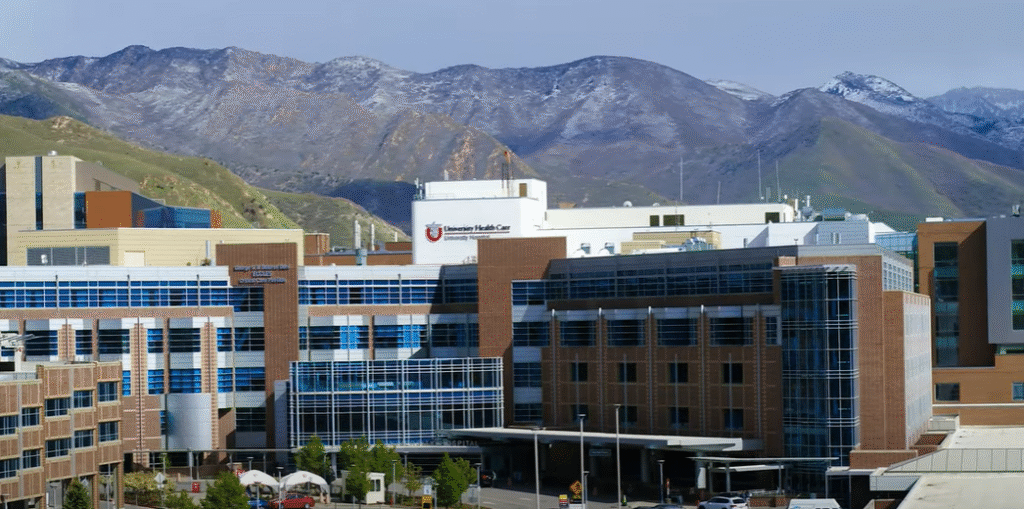A $951 million verdict in the Utah hospital lawsuit is being hailed as a turning point in American healthcare accountability. Judge Patrick Corum’s decision was remarkably unambiguous; he denounced the hospital’s actions and declared the labor ward to be “the most dangerous place on the planet” for a birth. He captured the essence of systemic negligence in a scathing manner that was remarkably effective.
Anyssa Zancanella gave birth in October 2019 while traveling from Wyoming, marking the beginning of the story. When the on-call doctor, shockingly, slept close by, inexperienced nurses gave excessive doses of Pitocin, turning what should have been a routine delivery into a tragedy. After a long-overdue C-section, baby Azaylee was born with irreversible brain damage, oxygen deprivation, and a malformed head.
The results for Azaylee have been disastrous. She is still non-verbal at age five, has frequent seizures, and needs 24-hour care. Her daughter is “trapped inside” a body and mind that are unable to express who she really is, according to Anyssa and Danniel, her parents. The everyday realities of carrying oxygen tanks, sleeping next to her for seizure monitoring, and adjusting to a life that has been permanently changed were highlighted in their incredibly moving testimony.
Utah Hospital Lawsuit – Key Case Table
| Category | Details |
|---|---|
| Case Name | Zancanella & McMicheal v. Steward Health Care (Utah, 2025) |
| Incident Date | October 14, 2019 |
| Location | Jordan Valley Medical Center, West Valley City, Utah |
| Family Involved | Anyssa Zancanella, Danniel McMicheal, daughter Azaylee |
| Child’s Condition | Brain damage, seizures, lifelong disabilities, non-verbal |
| Cause of Negligence | Undertrained nurses, excessive Pitocin, delayed C-section, sleeping doctor |
| Verdict Amount | $951,849,363.02 (Utah’s largest malpractice award in history) |
| Breakdown of Damages | $200M non-economic (child), $110M mother, $100M father, $65M medical costs, $475M punitive |
| Judge’s Comments | Hospital described as “the most dangerous place on the planet” for birth |
| Parent Company | Steward Health Care (filed bankruptcy, owes billions to creditors) |
| Future of Damages | Family may recover partial compensation amid bankruptcy |
| Legal Representation | Claggett & Sykes Trial Lawyers, with co-counsel |
| Broader Impact | Systemic call for better training, supervision, and patient safety |
| Reference Source | Nurse.org Report |

The amount of the verdict is wildly out of proportion to what is usually awarded for malpractice. The majority of birth injury cases end in settlements of $1 to $15 million, but this decision is almost 63 times higher, highlighting the seriousness of the negligence as well as the judge’s resolve to make a statement. In addition to providing the family with compensation, nearly half of the damages were punitive in nature, intended to hold Steward Health Care responsible for systemic shortcomings.
However, the family’s financial future is still up in the air. Steward Health Care is already bankrupt due to billions of dollars in outstanding debt. Getting even a piece of the verdict could be difficult. The lawyers are still optimistic that they will be able to obtain punitive damages, which are almost half of the award, but the process is expected to take a long time. This uncertainty notably reflects other well-known decisions where corporate insolvency and symbolic justice collide.
Broader concerns regarding medical supervision, staffing, and training are also raised by the Utah case. By permitting nurses who had just completed their training to handle a high-risk birth with little oversight, the hospital established conditions that were incredibly unreliable, inefficient, and ultimately dire. According to healthcare advocates, Azaylee’s injuries might have been avoided if appropriate staffing, mentoring, and supervision procedures had been followed.
The similarities to other industries are remarkable. Medical settings with inadequate staffing and training can collapse under stress, causing irreversible harm, much like how loosely regulated financial practices caused economic collapses. Hospitals might enhance training initiatives, enforce accountability, and implement systems that are noticeably quicker at identifying high-risk situations by forming strategic alliances.
Additionally, the case has cultural resonance. Medical malpractice, parental rights, and hospital accountability have been hot topics on social media in recent days. The Zancanella family’s grief is shared by families all over the country, especially those who have experienced a traumatic birth. The story’s emotional impact is especially helpful in accelerating reform because it gives a human face to what could otherwise be reduced to legalese.
This case also follows a growing pattern in which courts are rendering large verdicts in an effort to hold influential organizations responsible. From historic auto industry cases to billion-dollar settlements against opioid manufacturers, the Utah verdict significantly raised awareness of patient safety concerns and could spur legislative action. Now, lawmakers in Utah and elsewhere are facing pressure to make sure hospitals adhere to incredibly long-lasting standards of supervision and training.
The Zancanella family’s struggle has already spurred reforms, despite the suffering. Hospitals throughout Utah are implementing more stringent supervision models, retraining employees, and reviewing labor procedures. In order to ensure that intervention occurs much more quickly, healthcare facilities are now investigating predictive monitoring tools that can detect early indicators of fetal distress by utilizing advanced analytics.
The central human story is still eerie. Although Azaylee’s 2019 night will always influence her future, her case has brought attention to the dangers of carelessness and the necessity of structural change. Her suffering may result in safer births for many others because of her parents’ bravery in seeking justice.

